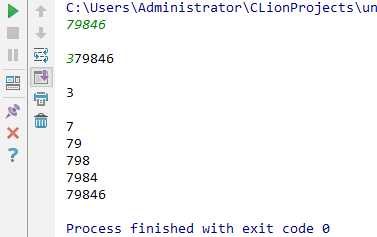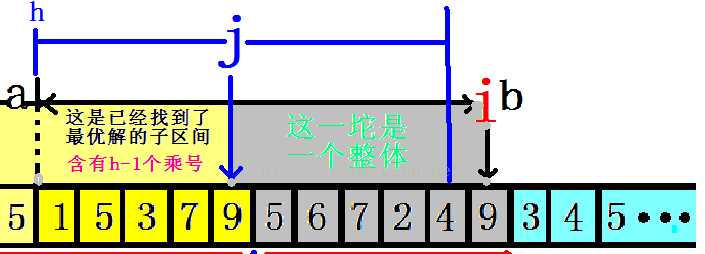题目描述 Description
小浣熊松松来到文具店,选择了K支自己喜欢的水彩笔,并抄下了它们的价格。可是到结算时,他发现自己抄价格时抄得太密集,以至于所有价格连成了一个数字串(你可以假设价格都是正整数)。老板想和松松开个玩笑,于是对他说:“你可以把这个数字串分成K段,代表这K支笔的价格,然后把他们加起来,就是你要付给我的钱了。”当然,松松想尽可能省下钱去买《算法导论》,所以请你来帮忙算算,他最少需要付多少钱。
输入描述 Input Description
第一行包含一个整数N,代表松松抄下来的数字串。
第二行包含一个整数K,代表松松买了K支水彩笔。
输出描述 Output Description
输出仅一行,为松松买这些笔最少花的钱。
样例输入 Sample Input
79846
3
样例输出 Sample Output
133
先贴上代码:
#include<bits/stdc++.h> using namespace std; char N[10005]; int k; long long dp[1005][1005]; long long Count(int h,int i) { long long sum = 0; for(int j=h-1;j < i;j++) { sum = sum * 10 + (N[j] - ‘0‘) ; } return sum; } int main() { cin >> N >> k; memset(dp,INT8_MAX,sizeof(dp)); for(int i=1;i <= strlen(N);i++) { dp[i][0] = Count(1,i); // cout << dp[i][0] << endl; } for(int h=1;h <= k;h++) //h个乘号 { for(int i=1;i <= strlen(N);i++)//到第i个数字 { for(int j=1;j <= i;j++)//1~i之间走动的j { dp[i][h] = min(dp[i][h],dp[j][h-1] + Count(j+1,i)); } } } cout << dp[strlen(N)][k-1] << endl; // for(int i=0;i < 6;i++) // { // for(int j=0;j < 6;j++) // cout << dp[i][j] << " "; // cout << endl; // } return 0; }
代码分析
要搞懂这段代码首先要明白数组的含义
h 代表的是有几个加号 , i 与 j 是经典动态规划里的东西 i 从1~n,j从1~i;
那个函数的作用是把字符串拆分,执行第一处的测试输出得:

(结合实例应该比较好理解)
然后,是最重要的三个循坏:
for(int h=1;h <= k;h++) //h个乘号 { for(int i=1;i <= strlen(N);i++)//到第i个数字 { for(int j=1;j <= i;j++)//1~i之间走动的j { dp[i][h] = min(dp[i][h],dp[j][h-1] + Count(j+1,i)); } } }

借用了别人的图片来解释:
dp[i][h] = min(dp[i][h],dp[j][h-1] + Count(j+1,i));
dp[i][h]到第i个用了h个加号,dp[j][h-1] + Count(j+1,i) 就是上面这幅图的代码表示
测试结果,测试输出dp[][]:

最后得到133
(ps:有个注意点就是用min求最小值的时候要将数组初始化为INTMAX)
